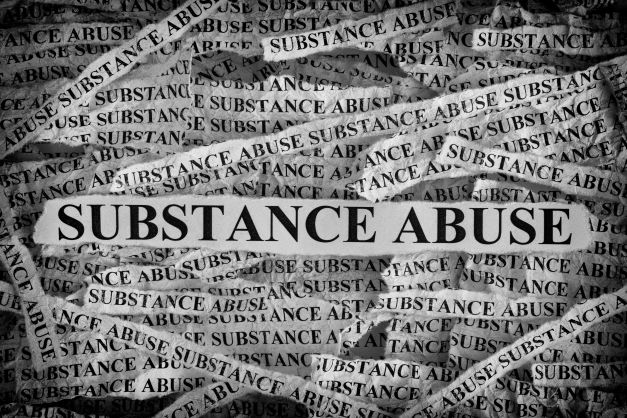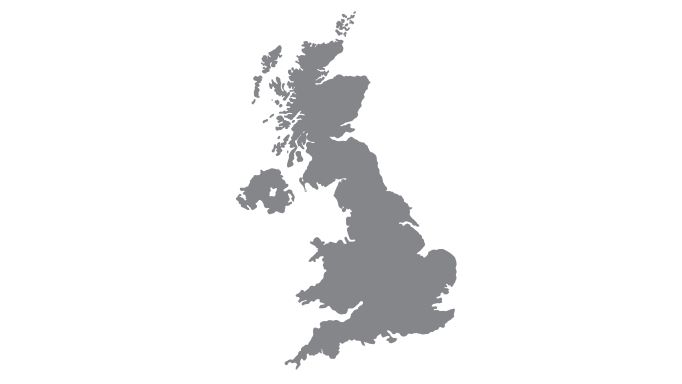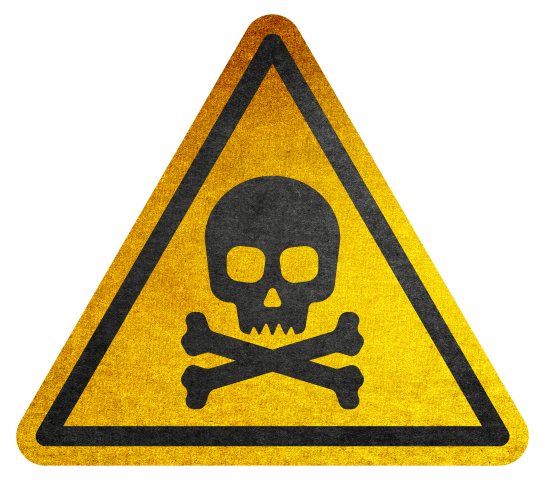In 2021, 4,859 deaths related to drug poisoning were registered in England and Wales, with a rate of 84.4 deaths per million people, marking a 6.2% increase from the rate recorded in 2020. Of these deaths, 3,060 were identified as drug misuse, accounting for 63.0% of drug poisonings.
There is a stark disparity between male and female drug misuse deaths, with the rate of drug misuse deaths being 77.5 deaths per million in 2021 among males compared to only 29.3 deaths per million among females.
The North East continues to have the highest rate of deaths relating to drug misuse (104.1 deaths per million people). Addressing the issue of drug misuse deaths requires targeted and effective drug addiction treatments and interventions in the regions that are most affected.
Gender Disparities
The data shows a stark disparity between male and female drug poisoning deaths. 115.1 deaths per million were registered among males (3,275 deaths), compared to only 54.1 deaths per million among females (1,584 deaths).

Drug Misuse Deaths
Of the total drug poisoning deaths registered in 2021, 3,060 were identified as drug misuse, accounting for 53.2 deaths per million people. Rates of drug misuse death continue to be elevated among those born in the 1970s, often referred to as “Generation X”, with the highest rate among those aged 45 to 49 years.
Opiate Involvement
Approximately half of all drug poisoning deaths registered in 2021 involved an opiate, with 45.7% (2,219 deaths) of deaths involving these drugs.
Cocaine Involvement
840 deaths in 2021 involved cocaine, which is 8.1% more than 2020 and more than seven times the amount recorded a decade ago (112 deaths in 2011).
Regional Disparities
The North East continues to have the highest rate of deaths relating to drug poisoning and drug misuse (163.4 deaths per million people and 104.1 per million, respectively). London had the lowest rate for drug poisonings (47.6 deaths per million people), and the East of England had the lowest rate for drug misuse (27.4 per million).
Drug Misuse Deaths in England and Wales: A Growing Concern
In 2021, 4,859 deaths related to drug poisoning were registered in England and Wales, with a rate of 84.4 deaths per million people. Of these deaths, 3,060 were identified as drug misuse, accounting for 63.0% of drug poisonings. If we exclude deaths where no information was available on the drug(s) involved, then 84.1% of drug poisoning deaths were drug misuse.
Gender Disparities
The data shows a stark disparity between male and female drug misuse deaths. The male rate of drug misuse deaths was 77.5 deaths per million in 2021 (2,206 registered deaths) compared to only 29.3 deaths per million among females (854 deaths).
Misuse of Controlled Substances
It is important to note that deaths classified as drug misuse must meet either one (or both) of the following conditions: the underlying cause is drug abuse or drug dependence, or any of the substances involved are controlled under the Misuse of Drugs Act 1971. Information on the specific drugs involved in a death is not always available, therefore figures on drug misuse are underestimates.

Regional Disparities
The North East continues to have the highest rate of deaths relating to drug misuse (104.1 deaths per million people). London had the lowest rate for drug misuse (27.4 per million), and the East of England had the lowest rate for drug misuse (27.4 per million).
The North East: A Region Struggling with Drug Misuse
In 2021, the highest rate of drug misuse deaths was observed in the North East of England, with 104.1 deaths per million and 255 registered deaths. The North East has had the highest rate of drug misuse deaths for the past nine consecutive years and has a statistically significantly higher rate than all other regions of England.
Regional Disparities
The East of England had the lowest rate of drug misuse deaths in 2021, with 27.4 deaths per million and 166 deaths. This highlights the significant disparities in drug misuse rates across England.
Wales
In Wales, the rate of drug misuse deaths rose to 72.4 deaths per million in 2021, from 51.1 deaths per million in 2020, returning to the high point recorded in 2018 (72.0 deaths per million). However, it is worth noting that delays in death registrations, which increased during the coronavirus (COVID-19) pandemic, are likely to have affected the figures for Wales.
Addressing the Issue
The high rate of drug misuse deaths in the North East, and the disparities seen across regions, highlights the need for targeted and effective drug addiction treatment in this area. It is vital that efforts are made to address the root causes of drug addiction and provide support for those who are struggling with substance abuse.
The COVID-19 pandemic has also brought attention to the importance of mental health and addressing the underlying issues that may lead to drug addiction. It is essential that we continue to prioritize mental health services and provide support for those who may be struggling with addiction during these difficult times.
Opiate Involvement in Drug Poisoning Deaths Remains High
For deaths registered in 2021, a total of 2,219 drug poisoning deaths involved opiates; this was 1.9% lower than in 2020 (2,263 deaths). Opiates were involved in just under half (45.7%) of drug poisonings registered in 2021, increasing to 61.0% when we exclude deaths that had no drug type recorded on the death certificate.
Lack of Recorded Drug Type
Of the drug poisoning deaths registered in 2021, 25.1% (1,219) had no drug type recorded on the coroner’s death certificate (for example, records only mention “drug overdose” or “multiple drug toxicity”).
Heroin and Morphine
Heroin and morphine continued to be the most frequently mentioned opiates with 1,213 drug poisoning deaths mentioning either one of these substances in 2021 (21.1 deaths per million people).
Cocaine Deaths on the Rise
Cocaine deaths have risen for the tenth consecutive year, with 840 deaths involving cocaine registered in 2021. This marks an 8.1% increase from the previous year (777 deaths) and more than seven times higher than in 2011 (112 deaths). 76.8% of these deaths involved males (645 males compared with 195 females). Cocaine has consistently been the second most-used drug, after cannabis, in England and Wales over the past decade.
Methadone and New Psychoactive Substances
There was a significant increase in deaths involving methadone in 2021, with 663 deaths registered, which is 28.5% higher than the previous year (516 deaths). Similarly, there was a significant increase in deaths involving new psychoactive substances (NPS), with 258 deaths registered in 2021, which is 88.3% higher than the previous year (137 deaths). This rise was driven by an increase in the number of deaths involving benzodiazepine analogues (primarily flubromazolam and etizolam) from 62 deaths in 2020 to 171 deaths in 2021.
Additionally, there have been increasing numbers of deaths involving benzodiazepines (a rise of 13.0% when compared with 2020, from 476 to 538 deaths), pregabalin (a rise of 18.9%, from 344 to 409 deaths) and gabapentin (a rise of 12.7%, from 118 to 133 deaths).
These statistics highlight the ongoing issue of drug addiction and the need for increased efforts to support those struggling with addiction and prevent further deaths. It is crucial that we address the rising use of cocaine, methadone and NPS, as well as the ongoing problem of opiate involvement in drug poisoning deaths.

The Complexities of Drug-Related Deaths
Drug-related deaths have been on an upward trend for the past decade, with 4,859 deaths related to drug poisoning recorded in England and Wales in 2021. The reasons behind this increase are complex and multifaceted.
Opiate Involvement
The overall trend is driven primarily by deaths involving opiates, with approximately half of all drug poisoning deaths in 2021 involving these drugs. Across Europe, rates of deaths involving heroin or morphine have been increasing, while the number of new heroin and morphine users has fallen. This indicates higher rates of death among existing long-term drug users.
Ageing Cohort of Drug Users
One possible explanation for the increase in drug-related deaths is that there is an ageing cohort of drug users, likely to be suffering from the effects of long-term drug use and becoming increasingly susceptible to a fatal overdose.
New Trends in Taking Specific Drugs
Another possible explanation is that new trends in taking specific drugs, including gabapentinoids and benzodiazepines, alongside heroin or morphine, may increase the risk of an overdose. These drugs can potentiate the effects of opiates, increasing the risk of respiratory depression and overdose.
Disengagement or Non-Compliance with Opiate Substitute Therapy
There may also have been an increase in disengagement or non-compliance with opiate substitute therapy (OST). OST is a form of treatment that uses medications, such as methadone and buprenorphine, to replace opiates and reduce the risk of overdose. However, if individuals disengage from treatment or do not comply with their medication regimen, their risk of overdose increases.
Conclusion
It is clear that the issue of drug-related deaths is a complex one, with a variety of factors contributing to the increase in deaths. As a society, we must continue to work towards understanding and addressing the underlying causes of drug addiction and overdose, and support those who are struggling with drug addiction.




